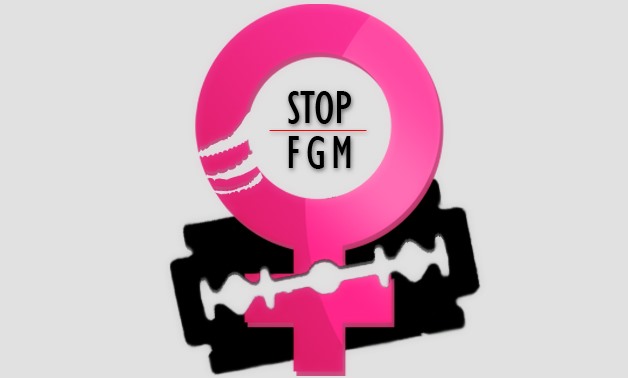
The Egyptian Center to Protect the Right for Medicine receives numerous complaints regarding FGM cases - Egypt Today photo
CAIRO – 3 May 2017: Female genital mutilation in Egypt is facing newly revitalized resistance from the Egyptian Center to Protect the Right for Medicine (ECPRM).
ECPRM issued a press statement Thursday stressing the "significant" role of media foundations and civil society organizations needed to eradicate the phenomenon of female genital mutilation (FGM).
Activist Mohamed Fouad, manager of the Cairo-based NGO, revealed that ECPRM receives numerous complaints against the practice of FGM.
In August 2016, the Egyptian Parliament approved the issuance of article no. 242
-bis of the Penal Code. The new article was added in accordance with article no. 58/1937.
Article no. 242-
bis entails imprisonment for not less than three months and not exceeding two years, or a fine of not less than 1,000 and not exceeding 5,000 Egyptian pounds ($55-276).
At the end of 2016, the criminal legislation was further amended to include harsher penalties for FGM; the penalty was extended to five to seven years of imprisonment.
The amendments reclassified FGM from a misdemeanor to a felony, and extended the punishment to 15 years if it led to permanent disability or death. Despite the new legislation FGM continues to be routinely practiced, especially in rural areas and Upper Egypt.
A
, which investigated FGM in 29 countries, claimed that Egypt has the one of the highest numbers of females who have undergone FGM. The number totals 27.2 million women.
The report stated that 77 percent of female circumcisions were performed by a medical professional.
Female genital mutilation involves the partial or total removal of female genitalia for non-medical purposes. It has no certified health benefits and, worse still, has serious adverse health consequences, including death in some cases.
The ECPRM statement called upon the parliament and the Ministry of Health to keep setting restrictions and enforcing laws to deter the practice of FGM.
According to Fouad, the Population Health Survey conducted by the Ministry of Health for 2005, 2008, 2014 and 2015 indicates that the percentage of females aged 15-17, who were subjected to FGM dropped from 77 percent in 2005 to 61 percent in 2015.
In December 2012, the U.N. General Assembly issued a
entitled “Intensifying global efforts for the elimination of female genital mutilations.” The resolution is a testimony to the growing commitment by countries to end what is described as a “harmful practice.”
The U.N. resolution included a wide set of demands and calls for states to aid the world-wide campaign.
The resolution called upon states to develop information, awareness-raising campaigns and programs on the elimination of FGM as well as to take all necessary measures including, “Enacting and enforcing legislation to prohibit female genital mutilations and to protect women and girls from this form of violence, and to end impunity for it.”
The term Female Genital Mutilation was widely known as “female circumcision” until the 1980s, implicitly equating it with male circumcision. The term “sexual mutilation of women” was coined in 1929 by Marion Stevenson, who was a Scottish missionary with the Church of Scotland Mission. She described the practice of female circumcision as “mutilation” and began combating the custom that was of great importance to the Kikuyu people, Kenya's largest tribe.
The procedure was first called "mutilation" following the National Council of Churches in Kenya in 1929, where it was referred to as the “sexual mutilation of women.” The term "female genital mutilation" was not commonly used until the 1990s, when organizations such as the World Health Organization began using the now-common terminology.
In Egypt, researchers and other historians have claimed that the practice can be traced to the era of the Pharaohs. The aim was to control women's sexuality and fertility by tampering with their genitalia.
The impacts of FGM on women have proven to be devastating, from bleeding to death to infertility, infection and sexual dysfunction.
The practice of FGM in Egypt has come to be regarded as a socially acceptable practice that is claimed to make females less sexually active and/or to withhold sexual activity before marriage. Sexual promiscuity and premarital sex remain highly controversial in Egyptian society.

Comments
Leave a Comment